Aspiring internet entrepreneurs often think that making money with blogs takes nothing more than slapping content onto a free WordPress theme, publishing it on a free hosting service, and waiting for the money to come pouring in.
The truth is, unless you were born under a lucky star and everything you touch becomes an instant success, it takes a lot more than a patchwork website to build and run a profitable, recognizable, and sustainable business model for sharing your writing online.
Thankfully, if you have the willpower and persistence to stomach criticism for your writing—and if you can stick with it for a couple of months to see if your blog can gain some traction, it’s possible to make a few hundred or even thousand dollars each month. (Potentially even more if it really blows up.)
And although competition is often stiff, there’s virtually no end to the ideas you can leverage into a blog—given that your ideas exist within the realm of known physical laws. Just let us know if there are any unknown physical laws you’ve encountered so that we can all get rich together.
Every Way to Make Money Blogging
In online entrepreneurial terms—blogging included—writing doesn’t earn money on its own.
Instead, it’s the effort you put into producing a good blog that will determine if you end up with a stud or a dud. This is especially true in the beginning when your business is like a fledgling birdie that needs sustenance to grow.
But before you reach the growth stage, however, it’s even more important to create a plan, build on your strengths, and choose a niche. It also helps if that niche is something you have expertise in and one that you find enjoyable enough to talk about every day.
Once you have your niche figured out, you can then start thinking about the tone of voice you want your publication to have and the audience you’d like to attract over time with your posts. You can also think about how you might eventually be able to monetize your blog down the line.
Here are some monetization ideas to help you plan ahead.
Google AdSense
Google AdSense is a free Google service that you can use to earn money from displaying matching advertisements on your blog. The ads are usually created by advertisers who want to promote some of their products online, which Google tries to pair with relevant content according to things like your blog’s niche and the type of visitors it attracts.
Pros: highly targeted advertising, full control over displayed ads, makes your site better and more trustworthy, very easy to use, detailed analytics, can provide a steady source of revenue
Cons: no mobile app, challenging analytics configuration, no specific platform integration, automatic ad placement could be better, not always user-friendly
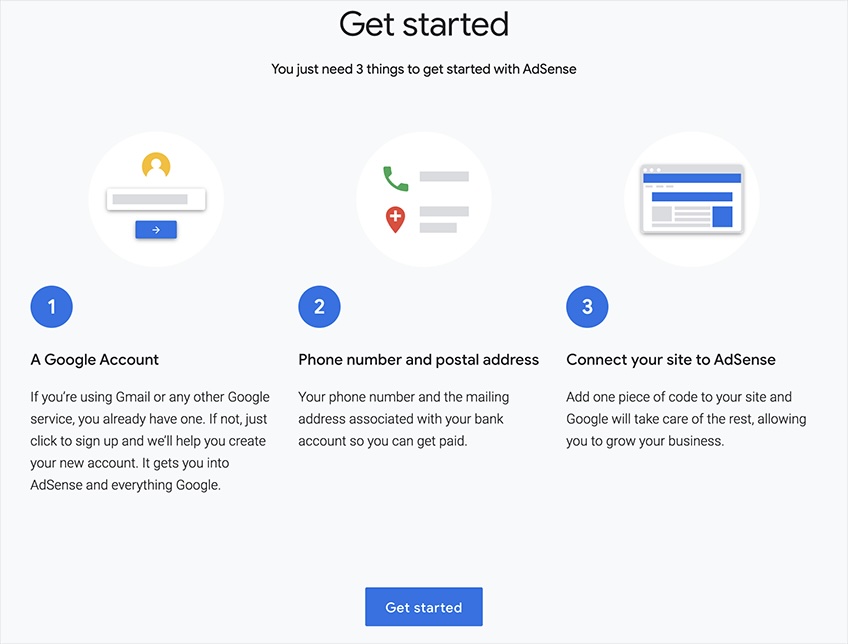
The good news with Google AdSense is that you have complete control over the shape, size, and placement of the ads, enabling you to get the most out of your website’s views, clicks, and impressions. At the same time, you’re still able to serve your audience high-quality content without fundamentally changing how they view it.
Selling digital products
Selling digital products is the perfect embodiment of passive income, at least in theory, since you only have to create a product once before you can sell it an infinite amount of times. As long as the demand stays persistent on the customer side, so can your sales.
Pros: instant access, easily scalable, cost-effective, global reach, convenient, modifiable, and updateable
Cons: piracy, compatibility, technical requirements, limited monetization, intangibility
Creating an alluring digital product to sell alongside your blog content can be tricky, as your visitors will not part easily with their hard-earned money for something that doesn’t address their pain points or interests.
One of the best ways to figure out what those things might be is to ask your visitors directly via something like a voluntary survey, online poll, or by speaking with them face-to-face on a video call. Their responses will provide you with a trove of data that you can use to create the ideal product or improve upon the features of an existing one.
Some of the most popular digital products include:
- Online courses
- Resume templates
- Ebooks
- Digital Comics
- Tutorials and guides
- Webinars
- Recorded workshops
- Automation templates
Selling physical products
If your blog turns into a recognizable brand, you can build on top of its success by selling an assortment of physical products such as merchandise, hand-crafted goods, and other ??paraphernalia associated with your content. These products can also increase brand awareness while simultaneously generating additional traffic for your blog.
Pros: tangibility, market versatility, brand exposure, customer loyalty, sensory experience
Cons: complicated logistics, fulfillment challenges, shipping costs, geographical area limitations, product return management
Some of the most popular physical products to sell on your site include:
- Branded T-shirts
- Coffee mugs
- Sweatshirts
- Enamel pins
- Tote bags
- Beanies
- Socks
- Fanny packs
- Caps
- Posters
- Stickers
- Phone cases
- Coasters
- Water bottles
There are two ways you can create and sell physical products: one, by directly negotiating with a manufacturer, and two, by using a specialized merchandise service like Redbubble or Printify.
Paid speaking opportunities
If your blog becomes a respectable opinion leader in your selected niche, you can leverage this into finding speaking opportunities at various industry or industry-adjacent conferences. These are often hard to come by, but when they do, it’s wise to welcome them with an open mind—even if your public speaking skills aren’t on the same level as those of Simon Sinek or a number of other eloquent guests on Lex Fridman’s podcast.
Pros: fun and exhilarating, can be very lucrative, flexible, great for networking
Cons: hard to master, in-person speaking conferences can be expensive to organize, exposure opportunities usually aren’t paid
If and when you land a gig, make sure to write, prepare, and memorize your speaking material leading up to the speech—or you can even take a different route and create a nail-biting meta-commentary on your speech like Tim Urban did in his infamous TED talk from 2016.
Writing sponsored content
Once your blog jumps out of the sandbox phase, it’s possible to capitalize on its success by offering to write sponsored content for other businesses. You can offer to do so for free exposure or at an established blogging rate, and the final arrangement could be a single, unique article or a series of blog posts over a designated period of time.
Pros: increased exposure, partnership opportunities, artistic freedom, extensive monetization options, fun to do
Cons: blurs the lines between editorial and sponsored content, can alienate some readers, more time-consuming to create than ads, legally binding
If companies aren’t quite interested enough to come to you for your blogging services, you can instead turn the tables and reach out to them. This can demonstrate proactivity, enthusiasm, and assertiveness—and it’s also an opportunity for you to offer discounted packages for sponsored content.
If you’re a good negotiator, for example, you can extend an offer where you receive a certain percentage from each conversion, thereby diversifying your income opportunities as much as possible without spreading out your skills too thin.
Also, keep in mind that you don’t have to limit your sponsored content to small businesses, startups, or individual entrepreneurs. For example, if you think Coke Zero is an absolute banger of a product and you want to reach out to The Coca-Cola Company, go for it. You never know who will respond, and everyone is fair game in this line of work.
Sponsored product reviews
For some companies, generating social evidence for their products is a number one priority because it can provide a stamp of approval that communicates a worthwhile investment. To get this, they’re often willing to compensate professional bloggers to write reviews of their products in hopes of creating a certain amount of hype around them.
Pros: tons of products to pick from, you can skip products you don’t like, early access to new hardware, sometimes you get to enjoy free stuff for hands-on reviews
Cons: staying objective is tough, small margins, highly competitive, time-consuming
Sponsored content is a known gray area that sometimes comes at the expense of showing bias in one way or another. However, you can preserve your professional integrity by clearly communicating the nature of the content to your readers. At the same time, a failure to do so may result in losing your audience for good.
Additionally, you can also express to the company/brand you’re working with that you’re not willing to make any compromises in your reviews regarding product features, materials, use cases, and even potential criticisms.
Offering services
In many ways, a successful blog can become a gateway to offering your expertise at a premium price. This can quickly turn into an additional stream of income and ultimately decrease the ongoing financial risks associated with keeping an online business afloat.
Pros: lots of opportunities, ample room for creativity, global market reach, potential to become a sustainable business venture
Cons: unqualified leads, high risk of miscommunicated deliverables, tough competition, not really passive income
There are many different content marketing services you can offer through your blog, some of which include:
- Guest posting services
- Copywriting services
- Web design services
- Graphic design services
- Social media consultancy
- Content management services
- Content automation services
- SEO services
Depending on your industry, it’s likely that there are many other unique services that you can capitalize on as well. For example, if your blog is related to makeup and cosmetics, you could offer personal consultations and/or digital makeover appointments.
Affiliate marketing
Affiliate marketing, also known as affiliate advertising, is one of the most popular monetization methods, in which you (the blogger) promote specific products or services with specialized links that end up tagging your blog as the main source of traffic.
Pros: low initial investment, immense potential, cost-effective, flexible, extensive global marketplace, no product inventory, work from anywhere,
Cons: challenging to maintain, low commission, requires patience and persistence, uncertain, ultra-competitive, some products are duds
When a lead clicks on your link and purchases the product it takes them to, you can earn a commission worth anywhere from 2-30% of each sale. In other words, you’re generating traffic and sales for a vendor and they’re rewarding you for it.
To receive unique affiliate links, you first need to sign up for an affiliate program and fulfill the requirements, as only then you can become eligible to promote those particular products on your blog. An affiliate program typically requires a legal agreement to promote the merchant’s products in a way that doesn’t misrepresent the products simply to generate more sales. Do that, and you’re probably out for good.
For example, the Amazon Associates policy is notoriously strict, requiring new affiliates to make at least three sales during the first three months before facing an account closure.
Although it’s the most popular affiliate program in the world, Amazon Associates is not the only player in town. Other affiliate programs for bloggers include:
- CJ Affiliate: CJ’s clients include Verizon, Zappos, Travelocity, and a bunch of other recognizable brands that you can leverage to your advantage and use their products as the main driving force behind your affiliate efforts.
- Rakuten Marketing: Rakuten is a household name that, unsurprisingly, has one of the best affiliate programs on the market that you can join today. It carries more than 1,000 merchants and a plethora of popular products to promote as well.
- ShareASale: Offering a unique two-tier affiliate program that enables you to pocket a commission from sub-affiliate referrals, ShareASale is an excellent option to explore for both seasoned and promising bloggers alike. The commission for some products can reach up to $300 per single sale.

Starting an Affiliate Marketing Blog From Scratch
Much like the less popular methods for monetizing a blog, the workload involved in setting up and maintaining an affiliate-driven blog involves several mandatory steps, each of them being equally important for the future success of your website.
Keep in mind that many of the following steps are applicable to the other monetization methods as well, but for the sake of providing a practical example, they’ll be focused on affiliate marketing.
Choosing a niche
The first step of starting an affiliate-powered blog involves choosing a niche, which refers to a specialized segment of a wider industry that’s usually populated by groups with a similar interest in a particular product or service. Examples of niche markets include tabletop gamers, pet owners, remote workers, and travel bloggers. Each group harbors a unique set of affinities that you can target to attract, retain, and grow your blog’s audience.
If it’s unclear why you would go through all the trouble of targeting a tiny chunk of a large industry when you could instead target the full industry and amass more leads that way, the answer is simple. Because targeting a smaller segment of the market means you can use your resources more effectively—including doubling down on what works and eliminating the approaches that prove to be ineffective in the long run.
This approach makes it easier to establish your brand and grow your presence without pandering to an entire industry and risking blowback if things don’t work out on the big scale right away.
In terms of actionable advice, there are a couple of things you might want to consider before settling down on a particular niche, including:
- Starting with your passion: Pick a subject that you have a vested interest in and look forward to sharing your thoughts about with readers, or alternatively, write about a topic that you’ve thoroughly mastered or experienced.
- Analyzing your competitors: Assess the difficulty of your chosen niche and look for patterns in the market behaviors of your immediate competitors, including their utilization of keywords, how they prioritize topics, and the main selling points of their posts.
- Calculating market demand: Use tools like Google Trends to determine the long-term viability of your niche and try to stick with topics that stay popular all year round.
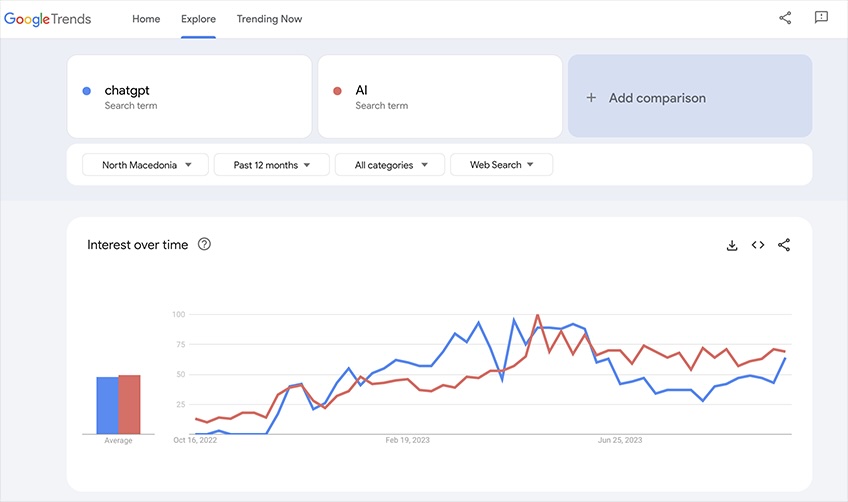
Building a website
Once you have your niche figured out, you need a platform where you can house your posts. This is essential for your upcoming affiliate operations as well.
Once again, there are a couple of ways to build a website, and most of them involve an established website builder such as GoDaddy, Bluehost, and Wix.
Alternatively, you can also code a website from the ground up, but walking that path requires an extensive knowledge of HTML, CSS, and PHP, plus some additional expertise in databases and web design best practices. These are often hard to master as a single person, let alone an individual blogger whose main objective is to join an affiliate network and earn some passive income on the side.

Lastly, signing up for a website-building service often gives you advanced tools, extended stability, and access to reliable servers that you otherwise might not get when coding a website yourself. This approach has its pros and cons, but at the end of the day, opting for a proven site builder can give your blog some compatibility with services that allow you to do many things by hand anyway.
Hosting your website
Before you can make your blog available to the general public, you must ensure that it has reliable hosting. Without hosting, your blog’s files will either gather dust on a server or lay dormant on your hard drive. (Or solid-state drive, for the purists out there.)
To that end, hosting providers make the process easy if you don’t want to set up your own dedicated server or don’t have the technical expertise to do so. In addition to offering a variety of hosting plans, these providers also offer regular updates, site maintenance, and site security—with or without having to purchase an additional subscription tier depending on the hosting provider.
As a side note, some hosting providers offer website-building tools in addition to hosting plans, but these often count as separate services that usually intertwine if you end up subscribing to both of them at the same time, with providers like Duda or DreamHost, for example.
By this point, you probably already decided on what domain name you’d like to use for your affiliate business. If not, a good rule of thumb is to go with something simple that plays off your blog’s niche. You can also try to come up with a new, simple, and catchy phrase that can serve well as a future brand name—something like Elektrobyte if you’re reviewing electronic components, or Wagclub if you’re into pet care.
Once your domain name has been taken care of, the next step is to settle on a provider to host your blog. Some of the most important features to take into account when researching different hosting providers include:
- Security: If you plan on monetizing your blog in any way, shape, or form (including applying for an affiliate license), keep in mind that you need sufficient security to prevent malicious parties from stealing your data, tampering with your affiliate links, or disrupting your day-to-day operations for their own financial gain.
- Reliability: To maximize your blog’s uptime or the time that your website stays fully operational, you need reliable servers to keep up with the incoming traffic and serve your customers without major interruptions on a daily basis.
- Flexibility: As your website grows, you’ll need a flexible hosting plan to accommodate the upcoming surge in traffic. On the flip side, it wouldn’t be a bad idea to have the option of scaling down your operations if your blog experiences a sudden downturn.
Generally speaking, you should try to avoid changing hosting providers many times because the migration process from one provider to another can break your site and lead to even more unwelcome setbacks down the road.
Thankfully, there are plenty of providers to choose from, including:
For a more comprehensive look at those options, hop over to our guide on the best web hosting providers.
Choosing a content management system (CMS)
For some entrepreneurs, choosing a CMS is the most enjoyable part of building an affiliate-driven blog for two reasons: one, you’re spoiled for choice, and two, you’re free to unleash your creativity in the way you think works best.
To put it simply, a CMS is a very user-friendly database that makes your website look good on the outside and function well on the inside. A good CMS like WordPress features an intuitive user interface (UI) that gives content creators a seamless website management experience without requiring them to be proficient in writing or manipulating code.
Most contemporary CMS options come in either traditional or headless packaging. For example, a traditional CMS is usually a complete website management solution that comes with a frontend editor to build out your pages and an intuitive database to store your content in.
On the other hand, a headless CMS is completely independent from your site’s main design. This gives you the freedom to pick a different framework on the front end and have your CMS serve as a backend database to handle typical website content such as articles, rich text, and images.
It’s also possible to run a blog without using a CMS, but that would make your daily operations much harder than they need to be. It would be like putting hurdles on an empty running track, needlessly increasing your website’s complexity.
Track and field aside, objectively evaluating a CMS comes down to three major features:
- User-friendliness: The CMS should be intuitive to navigate, with a user-friendly interface that enables non-technical bloggers to upload, change, and edit articles with ease.
- SEO: Make sure the CMS supports SEO tools such as image optimization plugins, rich text editors, and friendly URL structures.
- Ability to handle and organize content: Effective content organization is the meat and potatoes of a functional CMS. Look for functionalities such as tagging, metadata management, and proper categorization to ensure your blog’s content will be properly organized and easily discoverable.
In terms of what to avoid in a CMS, consider the following pitfalls:
- Hidden costs: Some CMSs may claim to be free, but as soon as your site passes a certain threshold or experiences a sudden increase in traffic, they immediately begin charging an exorbitant amount of money. Consider all facets of a particular CMS and make sure to have a backup plan for migrating your project elsewhere if you can’t afford the eventual upcharges.
- Needless complexity: If the CMS seems too complex and unintuitive to use, consider looking for an alternative solution. A good idea would be to create an account, take a good and hard look at the CMS and its functions, and soak up as much information as you can to decide whether that particular framework is going to be the right choice for building your blog.
- Limited support: If you hit a roadblock or encounter work-stopping issues, having extensive documentation and reliable support to turn to is key. Make sure that your intended CMS is backed up by a helpful community, has active support channels (on Slack, Discord, or elsewhere), and features an adequate number of user guides to troubleshoot the most common problems when they arise.
Some of the best CMSs for affiliate bloggers include:
- WordPress.org—The simplest, most widely distributed, and most popular open-source CMS on the market, which is made by the people for the people, and it’s completely free. One of the only downsides to WP is that it’s so popular that hackers and other malicious actors often target it to exploit possible security openings. This happens almost daily, usually via its extensive plugin repository.
- Joomla—The second most popular free CMS after WP, Joomla supports both object-oriented programming and password hashing, and it also offers a plethora of free and premium plugins for additional site functionality.
- Drupal—A slick, modern-looking, open-source CMS for bloggers, content creators, and affiliate marketers.
- Wix—A complete content management solution featuring a comprehensive list of advanced functionalities that typically removes the need for third-party plugins.
- Squarespace—An intuitive and simple all-in-one website building and hosting platform with powerful analytics that gives you a complete insight into how your site performs monthly. Its CMS plan is paid, but you can test it out with a free trial first.
- Shopify—Mostly known for its proprietary ecommerce platform, Shopify can also be leveraged to create a hybrid ecommerce and affiliate marketing blog for a more streamlined user experience. This is paid, but it comes with a powerful network of integrated tools.
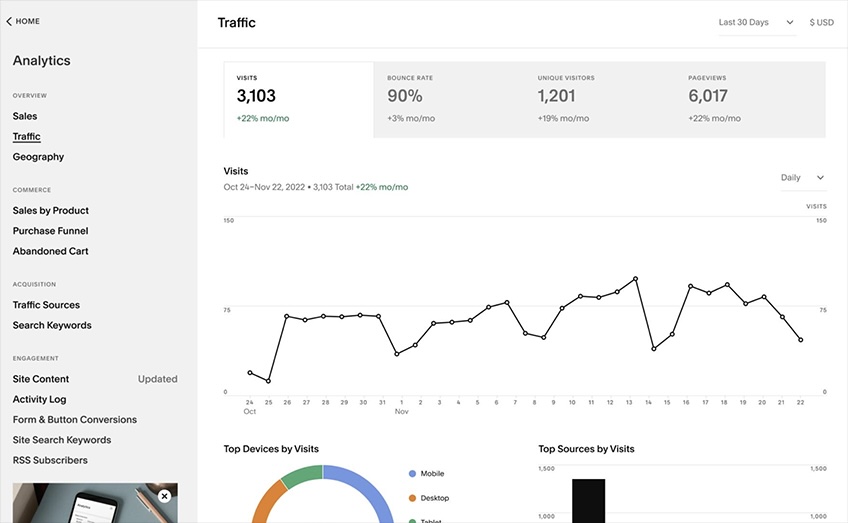
Optimizing your website for SEO
Lately, it seems like search engine optimization (SEO) has been experiencing a constant cycle of dying and then resurfacing again, similar to an immortal ouroboros whose atoms just can’t seem to dematerialize.
Esoterics aside, Google Search’s Helpful Content System update in September of 2023 indicated that there’s a prioritization of helpful content written by experienced niche professionals (and later checked by experts from the same field of work) over commercial-only content written by non-experts. That is to say, SEO is evolving, and your affiliate blog should evolve as well if you want to level the playing field against the biggest players in your respective industry.
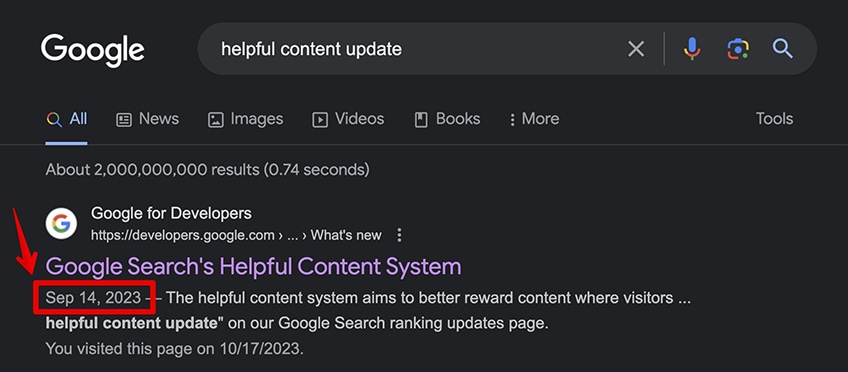
For aspiring new affiliates, it may be useful to think of SEO as a set of concepts, actions, and tweaks that play an important role in driving the most organic traffic back to your blog by utilizing the least amount of resources possible. Optimizing your website for search terms and keywords makes it more visible in search engine results pages (SERPs), which results in attracting more targeted visitors to your site.
Here are three actionable tips on how to optimize your affiliate blog for search:
- Perform relevant keyword research: Use SemRush or Ahrefs to perform comprehensive keyword research in order to identify the most promising keywords in your niche. Use these keywords sparingly throughout your blog posts, in your titles, and across your meta descriptions. This action alone should give you a significant edge over competitors that don’t take into account the importance and value of keyword research.
- Write high-quality content: You might have heard by now that content is king, and the importance of this adage continues to ring true in all facets of online blogging, including affiliate marketing. However, writing engaging content is easier said than done, and it often requires performing extensive research, cautiously stepping out of the lines of pre-established writing conventions, and injecting a unique tone of voice in each article without compromising the delivery of factual information.
- Optimize your website speed: Site speed is one of the major foundations of technical SEO and is paramount to delivering a seamless user experience across the entirety of your site. Ensure your blog has a quick loading time to reduce the probability of experiencing high bounce rates and improve your overall chances of ranking high in search results.
As you can tell, building an affiliate blog from scratch is not a simple task, as it can take up a lot of resources, time, and effort to get it right the first time. But it’s by no means the only way to make money blogging and build passive income on the side.
How To Get Passive Income by Blogging
Generating passive income from a blog is tough. To succeed, you need a loyal audience, a consistent output of high-value posts, and probably some luck to make it all work.
Furthermore, many of the popular blogs that exist today weren’t even created with the intention of making money, but rather for their founders to share something they were passionate about. Some of these blogs have ended up turning a profit because they grew organically, others because of persistence and willingness to adapt.
The probability of generating a passive income by blogging is always greater than zero, but you need to treat it like any other business both before and after it gets off the ground.
Getting there, however, requires generating a sustainable number of visitors, and to do that you’ll need to make sure that your audience has a reason to:
- Land on your blog for the first time
- Navigate elsewhere on your site to explore more articles
- Have an enticing reason to visit your blog in the future
- Promote or share your content on their own
- Have an overall positive experience with your site
Keep in mind that content alone, regardless of how good and creative it turns out to be, simply can’t make money on its own. For that, you’ll need to focus your attention on generating quality website traffic or traffic from targeted visitors who won’t be hesitant to purchase your merch, read your sponsored posts, and/or buy something via your affiliate links.
The top ways to generate passive income from a blog
Not all blog monetization techniques are created equal; some have an inherently higher chance of bringing in a steady stream of passive income, while others require a lot of legwork to get there.
Of course, none of them are guaranteed to work if your blog fails in other ways, such as having an unreliable hosting provider or an unappealing UI that sends users running.
Anyway, ignoring how we’ve already mentioned some or all of these methods in our list of ways to monetize a blog, the most promising ways to make passive income from your blog are:
- Affiliate marketing: This is the holy grail of monetization techniques because it’s relatively fast to set up, the initial investment is affordable for many aspiring marketers, and it doesn’t require much maintenance once you get your first site off the ground. That said, and because of its low barrier to entry, you can expect to encounter a lot of competitors in the first year of operations.
- Selling online courses and ebooks: The good thing about text in general is that once you commit it to paper, it tends to stay there forever. This is an exaggeration, of course, but the main idea is that the same course, ebook, or other digital media file can become a recurring source of income with minimal effort on your part—which is perfect for generating passive income years down the line. Keep in mind that you’ll need to update your courses from time to time for them to remain relevant and timely.
- Running digital ads: Displaying online ads on your blog can be a great way to earn passive income on the side, and with some luck, turn it into your main revenue source once you get enough traffic to become a self-sustainable business model. Nevertheless, online advertisement is a very one-sided business because the platforms offering the ad programs (Google AdSense, YouTube Ads) usually have all the vetoing power in terms of approving your account, forwarding your payments, and changing the rules of the game on the fly.
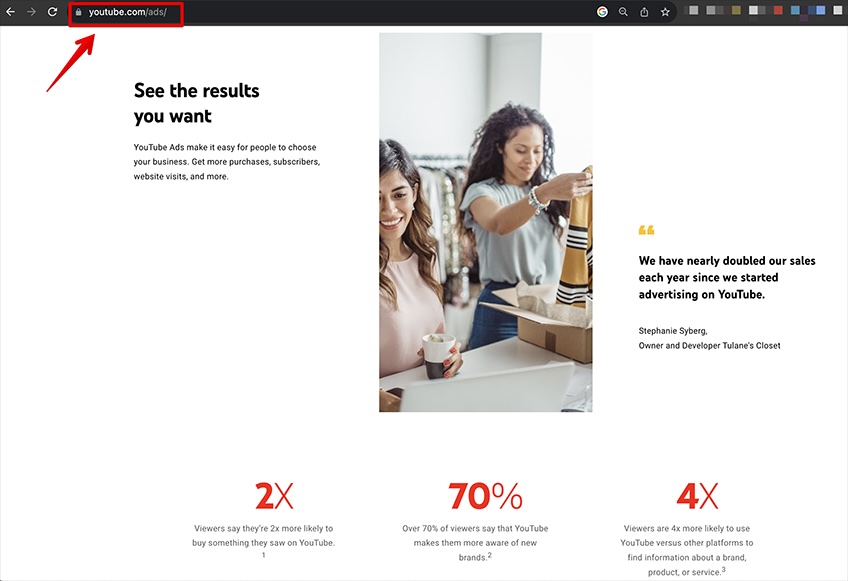
At the end of the day, while you can’t leave a blog unattended and expect to build an empire with it, you can reduce your number of working hours by introducing automated systems to overlook the business and effectively serve as your second-in-command.
3 Actionable Tips for Making Money Blogging
Theorycrafting about all the ways you can make money by blogging is one thing, but seeing these methodologies put into action is another.
If your blog isn’t doing a great job of making money, here are some actionable tips to turn it around on a dime—pun totally intended.
1. Select a topic with revenue potential
Finding profitable topics to write about on your blog can be thought of as striking a delicate balance between:
- The current and future popularity of a particular topic
- The existing competition in your chosen niche
- The monetization potential of your chosen topic
Topic popularity
One of the most important factors to the success of a blog is that it needs regular and engaged readers. You can probably dominate a super niche topic about something like examining the shoe size of every main character in a 20th-century Bildungsroman novel (don’t ask), but there wouldn’t be much point in that if nobody had any interest in it.
This is why it’s paramount to pick a topic that people have a vested interest in and to avoid topics that are likely to fizzle out in the coming years—like the former juice subscription service Juicero, or Logan Paul’s legally-questionable NFT venture CryptoZoo, or the now-defunct cloud gaming service Google Stadia.

Anyway, choosing a popular topic improves the likelihood of attracting and retaining a devoted audience, thereby increasing your chances of growing your blog in the first year of operations. In particular, instead of writing a post about food or dining, it’s advisable to dig in a little deeper and examine more specific topics like:
- Six 5-course dinner ideas for established restaurants
- Best gluten-free recipes for beginners
- Five ways to prepare organic egg whites
You can use tools like Google Trends, SemRush, and Ahrefs to check the popularity of particular topics, uncover new search phrases, and explore current trends.
Topic competition
An alternative way of increasing your chances of turning a profit is to write about a relatively popular topic that only has a few sources of information available online—which sounds contradictory, but that’s not always the case.
While the internet is a very noisy place, there are many good topics out there waiting to be put to good use. Often, you’ll have to tighten the bands around your specific niche to uncover such topics or be an early adopter of a fresh topic right before it takes off. Other times, the competing content might exist already, but it could have such low quality that you could easily overtake its position in the SERPs by creating something better and more useful.
In other words, identifying a topic with limited or non-existent competition can work wonders for your blog’s profitability and growth. A couple of examples include:
- Hydroponic gardening tips: With more people choosing an urban lifestyle over a suburban or even a rural one, the need for growing vegetables indoors is becoming more prominent with each passing day. By centering your attention on producing impactful content on indoor, soilless gardening, you can become a true expert in this promising niche.
- Eco-friendly and ethical fashion for men: As climate change is becoming one of the world’s major concerns, the demand for sustainable living is rapidly increasing as well. By tapping into this industry and covering topics like eco-friendly fashion, ethically sourced materials, and sustainable clothing brands, you can become a respectable voice and grow your influence accordingly.
- Genre-specific or group-oriented gaming advice: Focusing on a particular group of gamers or giving out recommendations on how to navigate through certain genre-specific games is a unique way of becoming a blogging authority in that niche. For example, coming up with hardware advice for left-handed gamers or tailoring your content towards survival-horror enthusiasts are just two potentially untapped segments of the gaming market that you could use to your advantage.
If you’re still strapped for ideas, check out Ubersuggest or Moz’s free Keyword Explorer to get you started.
Monetization potential
If you’ve identified a topic with high demand and low competition around it, your next step is to monetize it with relevant advertising programs like Google AdSense, Amazon Associates, or ShareASale. In particular, AdSense offers differing click values depending on your selected topic.
In an ideal world, you’d like to go for high-paying topics. However, you’ll probably encounter fierce competition in those niches. A better alternative would therefore be to explore middle-of-the-road click-value topics with fewer competitors bidding for them, but ones that still carry the potential of a high-yield return on investment (ROI).
Identifying highly monetizable topics requires putting in a little legwork, but the potential for realizing profits long-term is more than worth your time. Here are two examples of topics with high ROI potential:
- Gaming peripherals: Gamers are very particular about their gaming habits, as they often want to know if some piece of equipment is worth the money before making a purchase. You can review wireless gaming headphones, explore a variety of mid-range mechanical keyboards, or write about the most precise Bluetooth mice for players fond of that high-octane, first-person shooter gaming experience.
- Tips for digital nomads: As people are ditching the office for a more relaxed, remote working lifestyle, the conversation around digital nomads has now become an everyday occurrence. Blogging in this niche can become a lucrative venture through reviewing travel gear, offering coaching services, or sharing your experience from a variety of co-working spaces in a sponsored post.
To optimize your marketing funnels and maximize your passive income potential, stay on the lookout for platforms like Demandbase One, StackAdapt, and Zeta Marketing Platform.
2. Publish weekly (at the very least)
Keeping your site highly ranked requires publishing at least one original article each week—or more depending on your end goals and how fast you want to grow your blog.
If you want to increase your traffic, for example, you might want to publish more than one article per week, as that will give Google more opportunities to discover your site and recommend it to interested searchers.
Conversely, to optimize your blog for affiliate marketing, you’ll want to consider creating more product reviews, recommendation lists, and comparison tables, as that will increase your chances of closing a sale.
Additionally, if your blog is about examining more complex topics such as electrical engineering or architectural design, then you should focus on publishing long-form content less frequently.
It’s also important to note that some types of blogs may be able to churn out articles at a higher pace because they have a team of writers working for them full-time. If you’re the only blogger for your site, you’ll have to find a compromise between your working schedule and your goals.
3. Discover your target audience
As we’ve seen, site traffic is one of the key metrics that highly correlates with achieving success with your blog. To generate the most traffic possible with your existing resources, you need to understand exactly who you’re writing for.
Begin by examining the types of readers who would be interested in reading your blog, including who they are and how they use the web. Then, sort them into groups depending on their age, gender, education, professional occupation, level of income, marital status, and interests outside of work.
Furthermore, you should also consider the online habits of your prospective readers, such as:
- When they are most likely to go online
- Where they spend the majority of their time
- Which social media platforms they occupy the most
- How much time they spend online and when
Lastly, think about the challenges your target audience faces and the ways you can try to solve them in the niche you’re going to be writing about. This can help you create a blog that caters to real individuals by providing them with useful solutions.
Conclusion
Growing a lucrative blog requires research, motivation, grit, and probably luck—but you can cut down on how much luck you need by creating a stable website with a well-planned and carefully curated monetization strategy.
To find more about blogging in general, check our main blogging hub, as well as our guide on how to start a blog in 11 simple steps.
